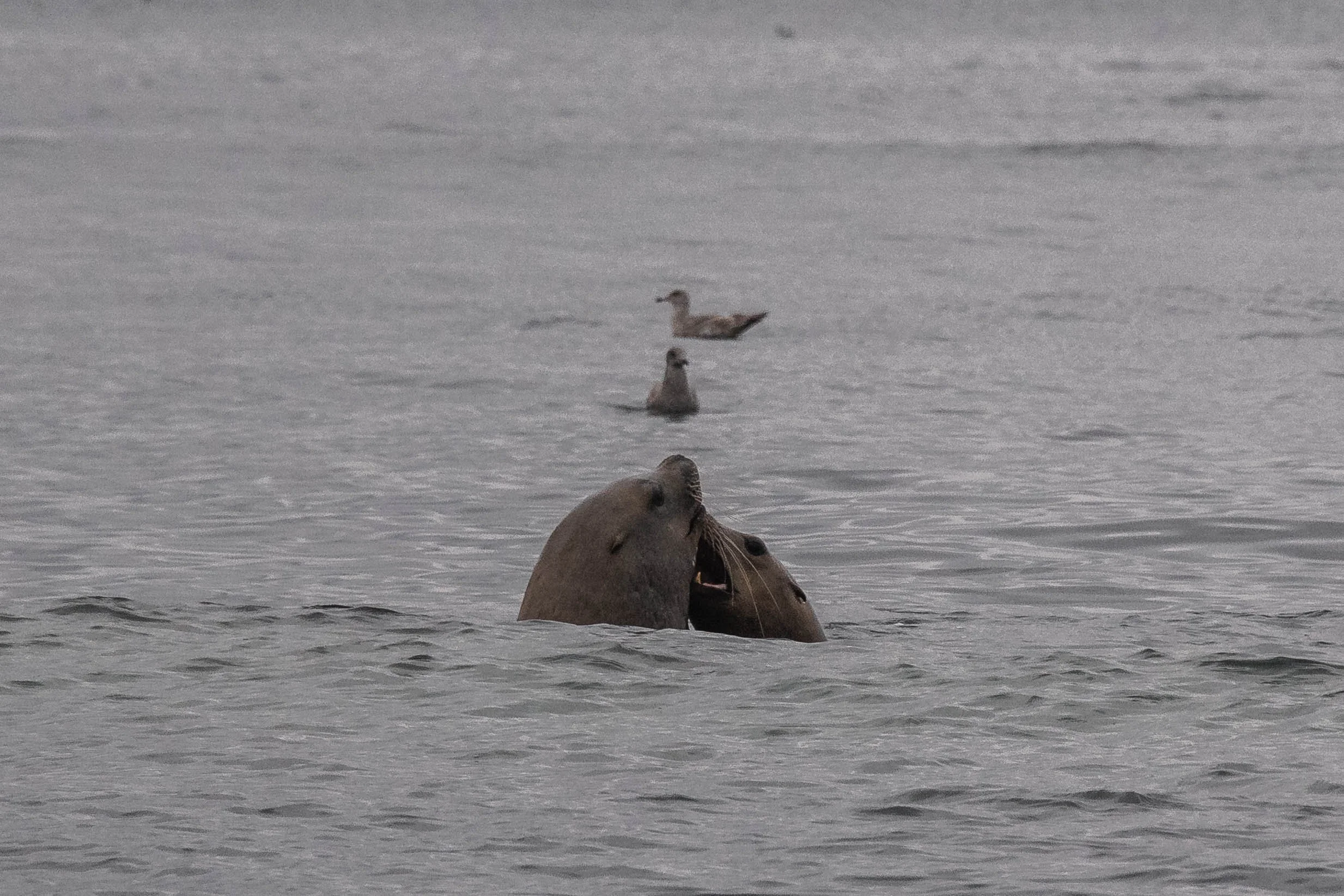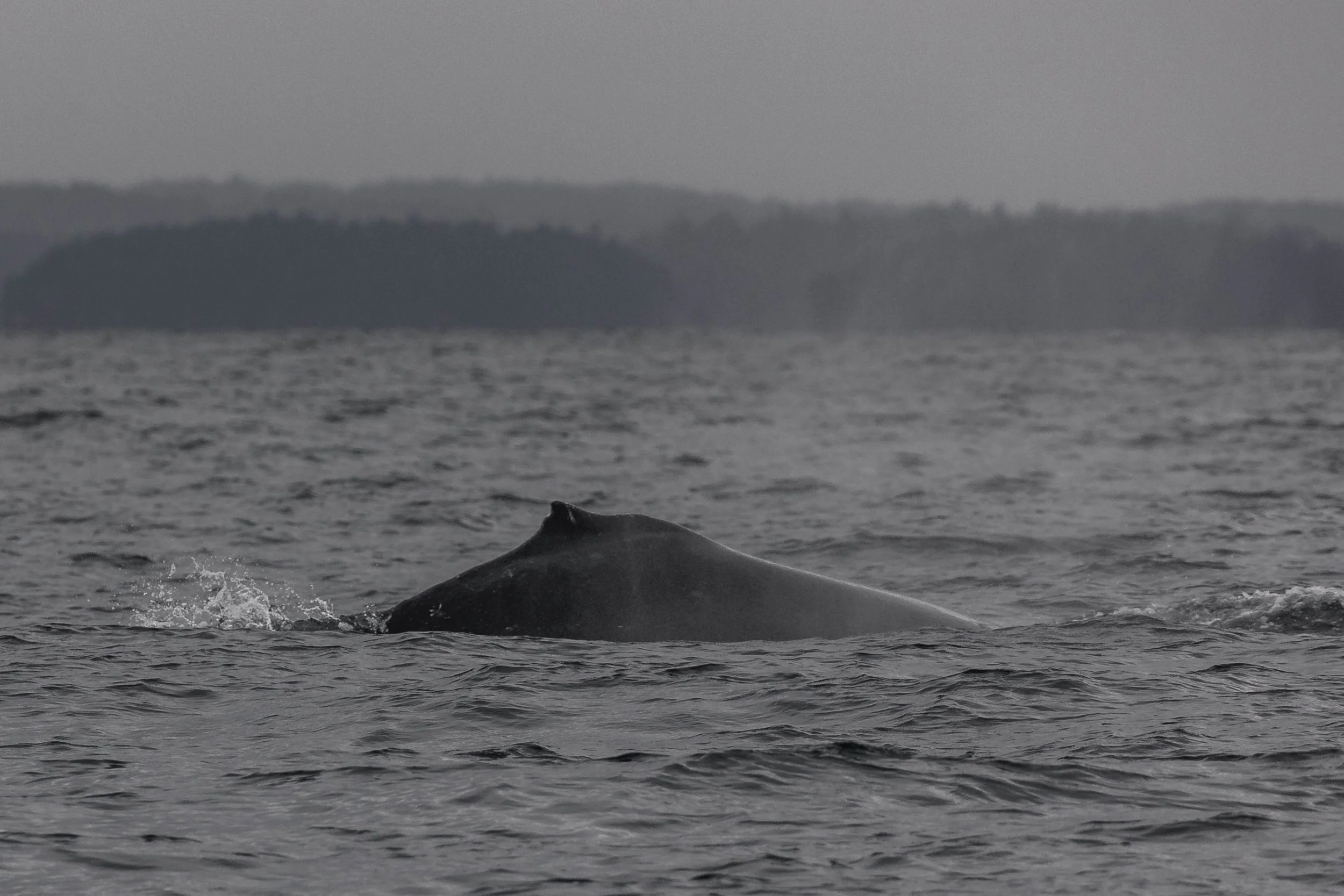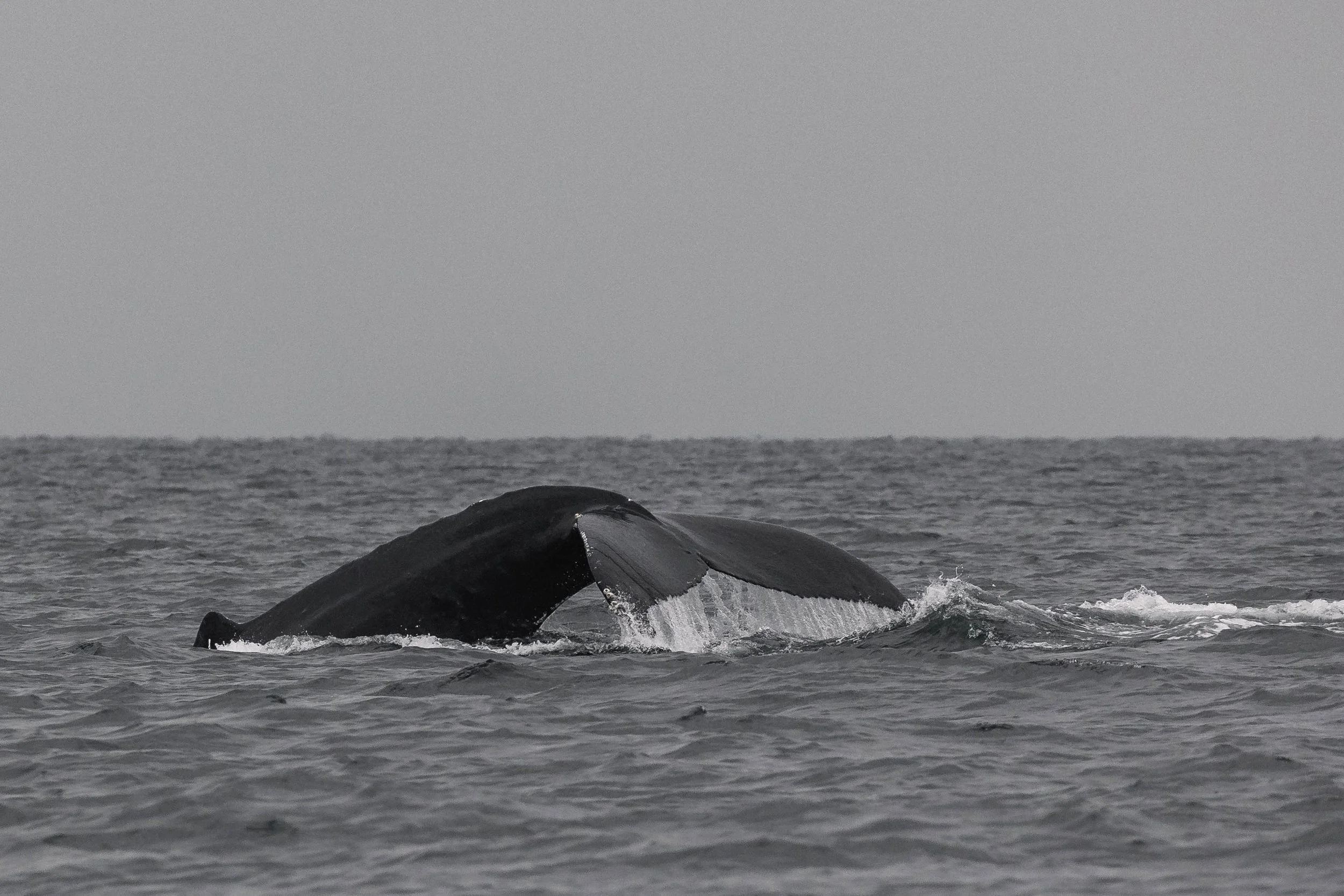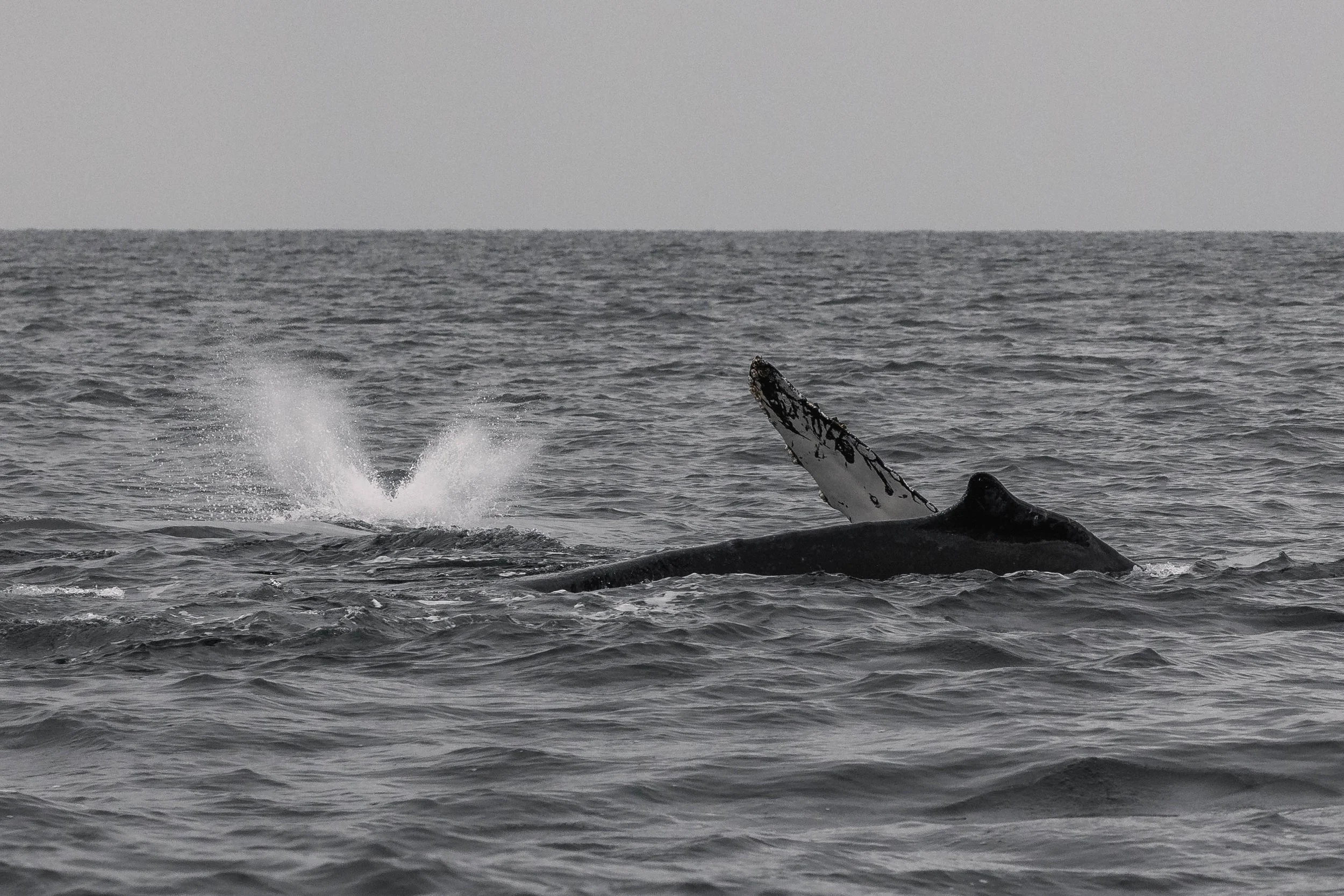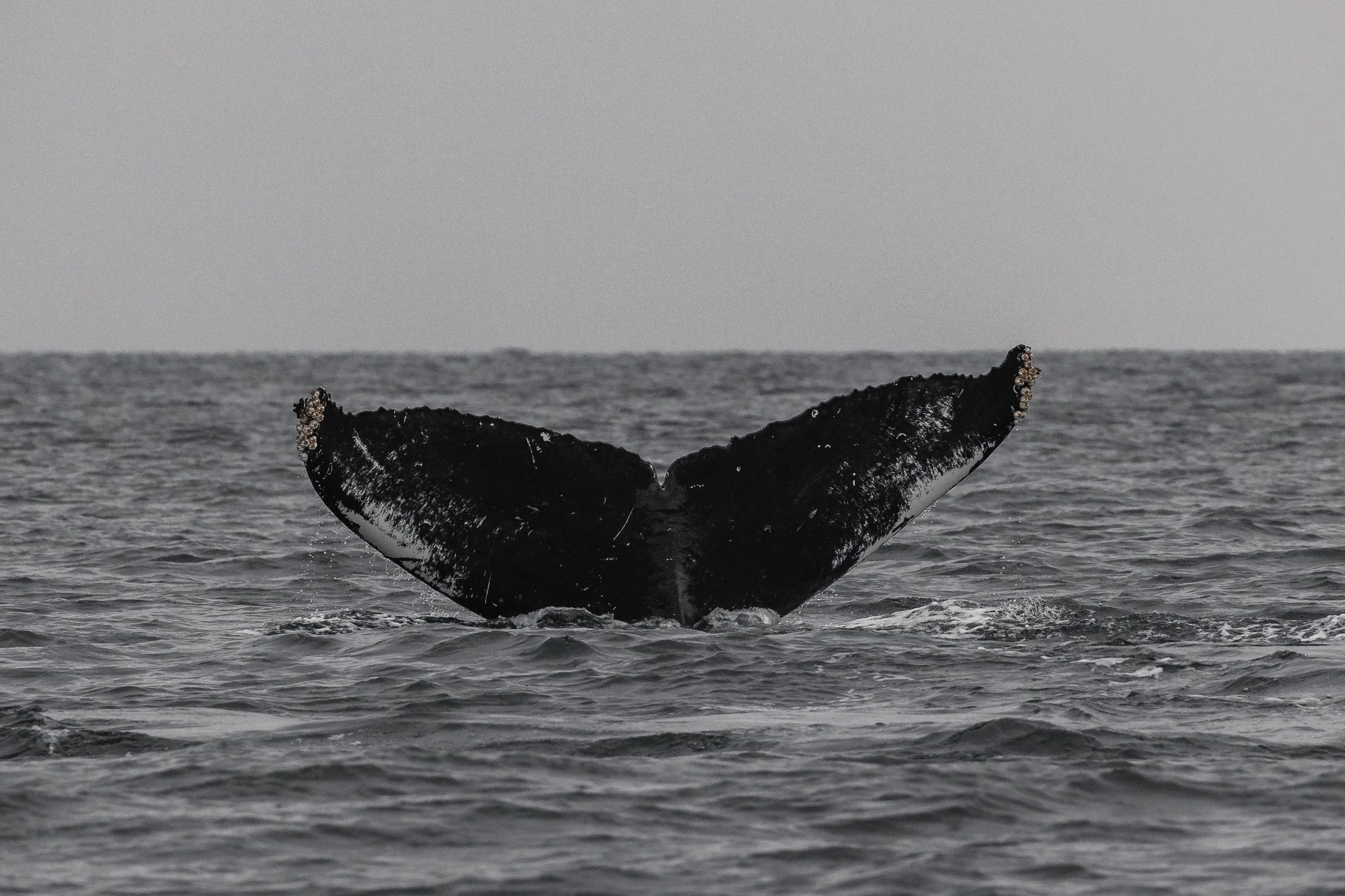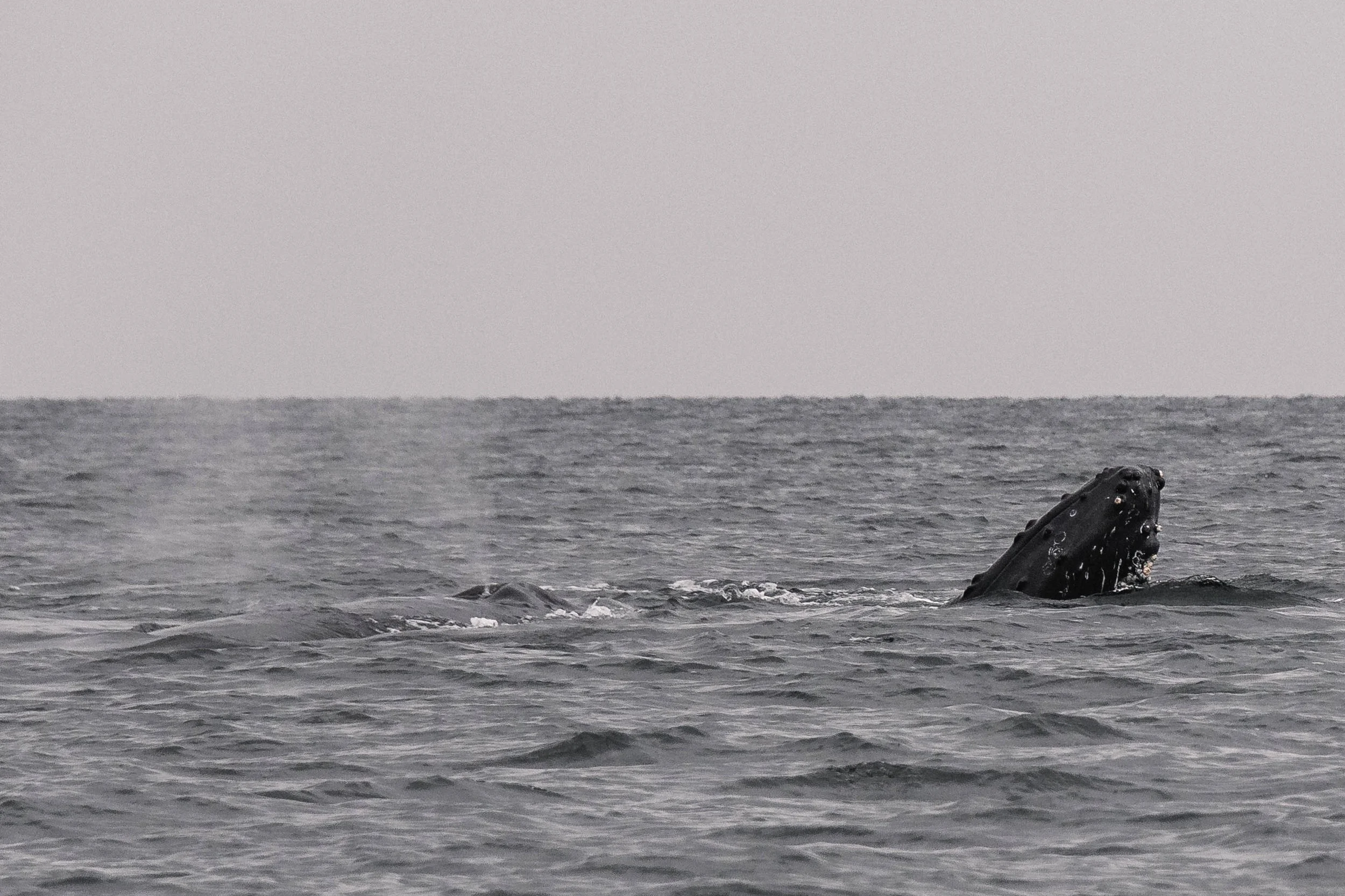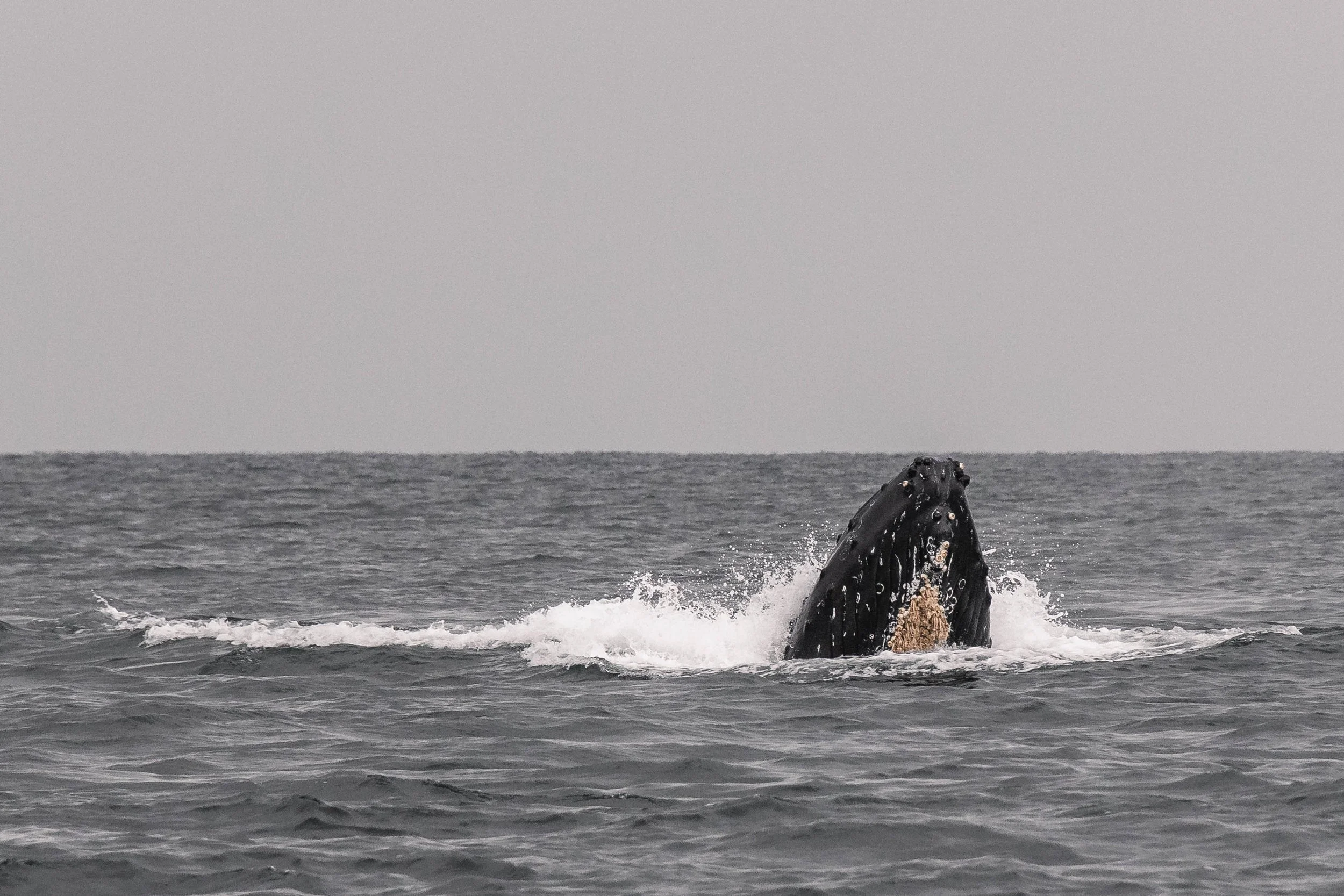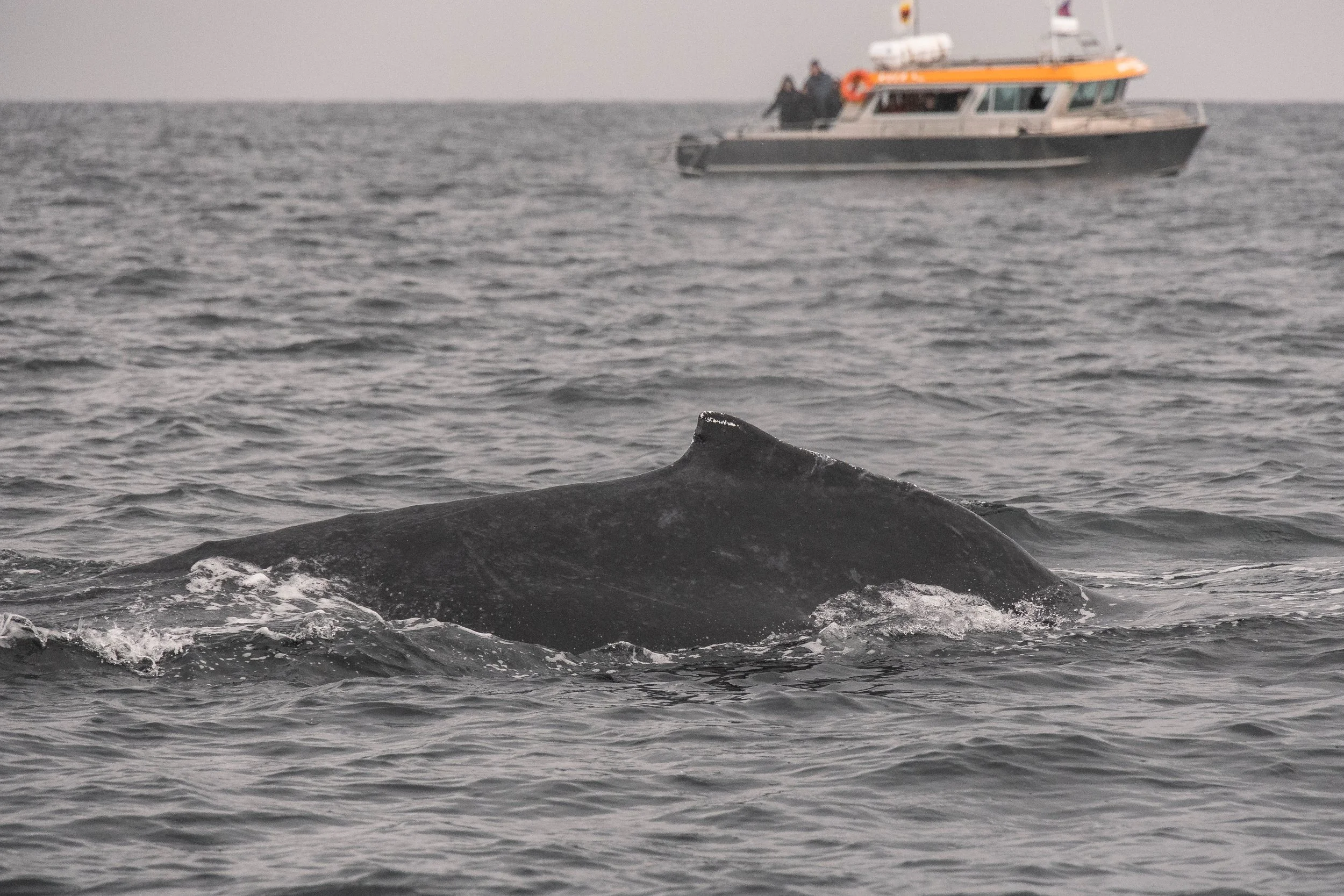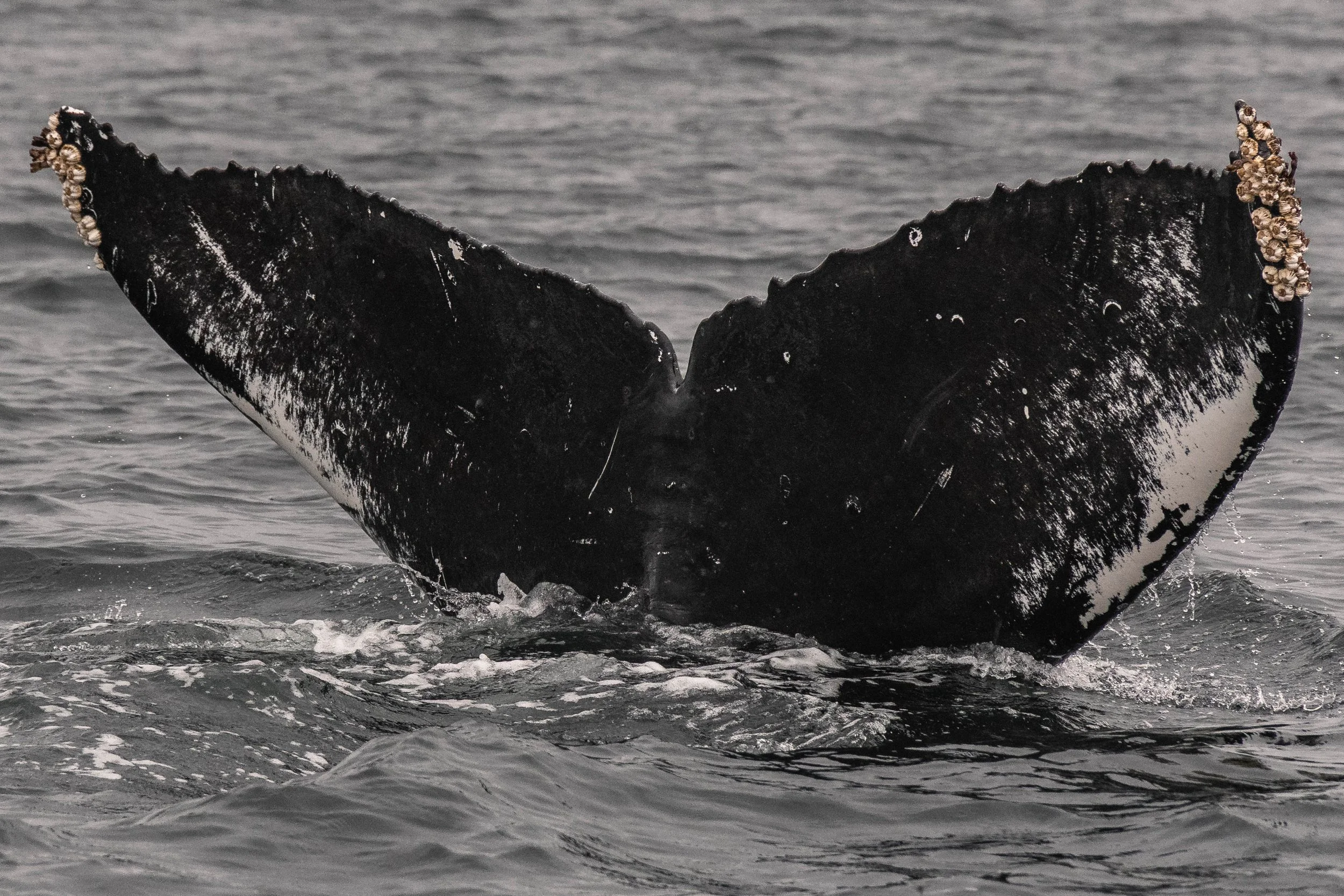October 12, 2025 - A group of humpbacks tuckered themselves out in the Strait and a familiar humpback travels on her own
This afternoon, both Kula and Keta set off into what can only be described as a classic fall day on the West Coast, a mix of wind, rain, and that unmistakable moody atmosphere that makes the Salish Sea so captivating this time of year. Even in the drizzle, the ocean seemed alive and full of potential. With reports of splashing near Polier Pass, we decided that would be our destination for the day. This area is known for its nutrient-rich waters and is a hotspot for marine life of all kinds, and we were hopeful that something exciting was waiting for us out there.
As we made our way toward Polier, we couldn’t resist a stop at the always-lively “Stinky Rocks.” Here, dozens of Steller Sea Lions had hauled out for the day. The colony was its usual rowdy self, roaring, growling, and bickering for the best spots on the slick rocks as waves crashed around them. These massive pinnipeds can weigh up to 2800 pounds and are surprisingly agile for their size, easily slipping between the rocks or diving after schooling fish below. Overhead, gulls circled eagerly, waiting for an opportunity to snatch up any leftovers from the sea lions’ meals. It’s never a dull moment at Stinky Rocks, an accurate display of West Coast wildlife at its finest.
From there, we continued toward Polier Pass, and before long, distant blows began to rise on the horizon. As we approached, dark shapes rolled and surfaced through the chop, and then one whale suddenly spy-hopped, lifting its massive head vertically out of the water for a look around. We had found them! What followed was an incredible scene of social behaviour as four humpbacks, Honu (BCX1856), Bagheera (BCY1471), Aether (BCZ0414 calf 2024), and Beak (BCX1606), swam and associated together.
The group was lively and full of energy, rolling, chasing, and even pec slapping, where a whale slaps its long pectoral fin against the surface of the water. Every so often, one would raise that iconic 15–20-foot tail in a grand dive, giving our naturalists a chance to capture ID photos. Humpback whale identification is often based on the unique pattern and markings on the underside of the tail, but on more active days like this, we rely on dorsal fins as well, each one distinct in shape and scarring.
To us, it seemed like we might have been witnessing a bit of pre-migration social or competitive behaviour. Around this time of year, humpbacks begin to prepare for their long journey south to the warm breeding grounds of Hawaii and Mexico. As hormones rise and energy builds, these playful and sometimes competitive group interactions become more common. It’s always fascinating to observe, a reminder that even massive animals like these have complex social lives.
Humpbacks are true ocean athletes, reaching lengths of up to 50 feet and weighing as much as 80,000 pounds. Every movement, whether a breach, roll, or slap, takes a tremendous amount of energy. After some time, the quartet’s high-energy antics began to slow, and we watched as they shifted into what looked like a resting state. Humpbacks engage in unihemispheric slow-wave sleep, meaning they rest one half of their brain at a time while the other remains awake enough to surface for air and maintain awareness of their surroundings. Watching these giants gently surface and breathe in the misty air, it was clear they’d earned a little rest.
We eventually left the group to their peaceful drifting and began the journey back toward Nanaimo. But the day had one more surprise in store. Through the curtain of rain, Keta’s crew spotted another blow, a solitary whale, moving with purpose. This individual was less interested in play, instead travelling steadily through the swell without lifting its tail for a deep dive. Even so, our team recognized it almost immediately by its distinctive dorsal fin; it was Sherwina (BCY0961), a familiar visitor to our area!
As the rain began to fall a little harder and the sky darkened, we took one last look at Sherwina before heading for home. There’s something special about these fall trips: fewer boats, shifting weather, and the whales preparing for their next great migration. The Salish Sea feels wilder, moodier, and more alive than ever. Days like this remind us just how lucky we are to share these waters with such incredible creatures, rain or shine.
Photos below taken by Marine Naturalists Vanessa Vereschahen and Desarae Poier.
Two Steller Sea Lions fighting as the gulls watch. Photo by Vanessa Vereschahen.
A gull landing among the sea lions. Photo by Vanessa Vereschahen.
Some very itchy Stellers, how many can you spot scratching? Photo by Desarae Poier.
Steller Sea Lions resting on the rocks. Photo by Desarae Poier.
Aether’s dorsal fin. Photo by Desarae Poier.
Beak surfacing. Photo by Desarae Poier.
Bagheera on the left with Honu’s tail in the middle and Beak on the right. Photo by Desarae Poier.
Beak flukinig. Photo by Desarae Poier.
Beak’s tail. Photo by Desarae Poier.
Rolling around. Photo by Desarae Poier.
Bagheera’s dorsal fin. Photo by Desarae Poier.
The other side of Bagheera’s dorsal. Photo by Desarae Poier.
Honu’s dorsal. Photo by Desarae Poier.
The left side of Honu’s dorsal. Photo by Desarae Poier.
Honu diving. Photo by Desarae Poier.
Honu fluking. Photo by Desarae Poier.
Bagheera with a tail flick. Photo by Desarae Poier.
Can you spot the barnacle passenger on this whale? Photo by Desarae Poier.
A spy-hop beside a blow. Photo by Vanessa Vereschahen.
Beak’s dorsal fin with Bagheera’s tail poking out above the waves. Photo by Vanessa Vereschahen.
A rostrum lift as another surfaces behind. Photo by Vanessa Vereschahen.
Check out all those barnacles. Photo by Vanessa Vereschahen.
Bagheera followed by another. Photo by Vanessa Vereschahen.
A fluke waterfall from Honu as Beak surfaces beside. Photo by Vanessa Vereschahen.
Beak surfacing. Photo by Vanessa Vereschahen.
Beak’s dorsal fin. Photo by Vanessa Vereschahen.
Honu’s dorsal with Kula in the background. Photo by Vanessa Vereschahen.
Honu’s tail. Photo by Vanessa Vereschahen.
Sherwina travelling in the rain. Photo by Vanessa Vereschahen.

